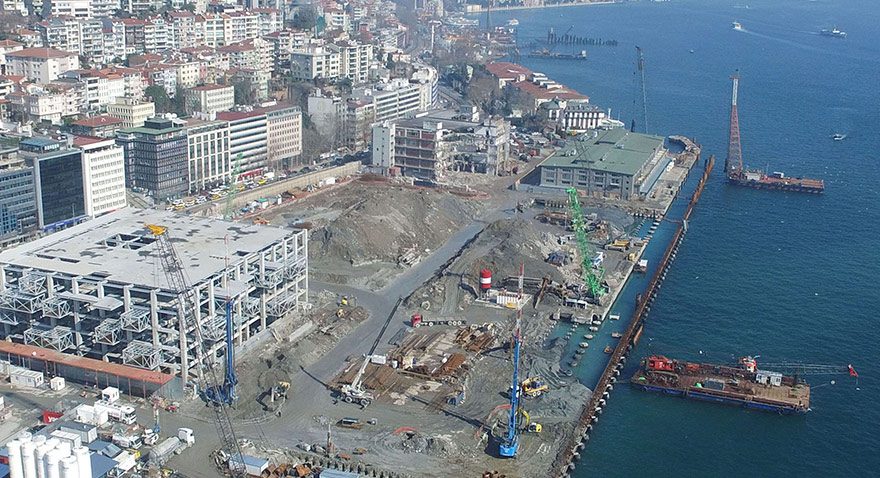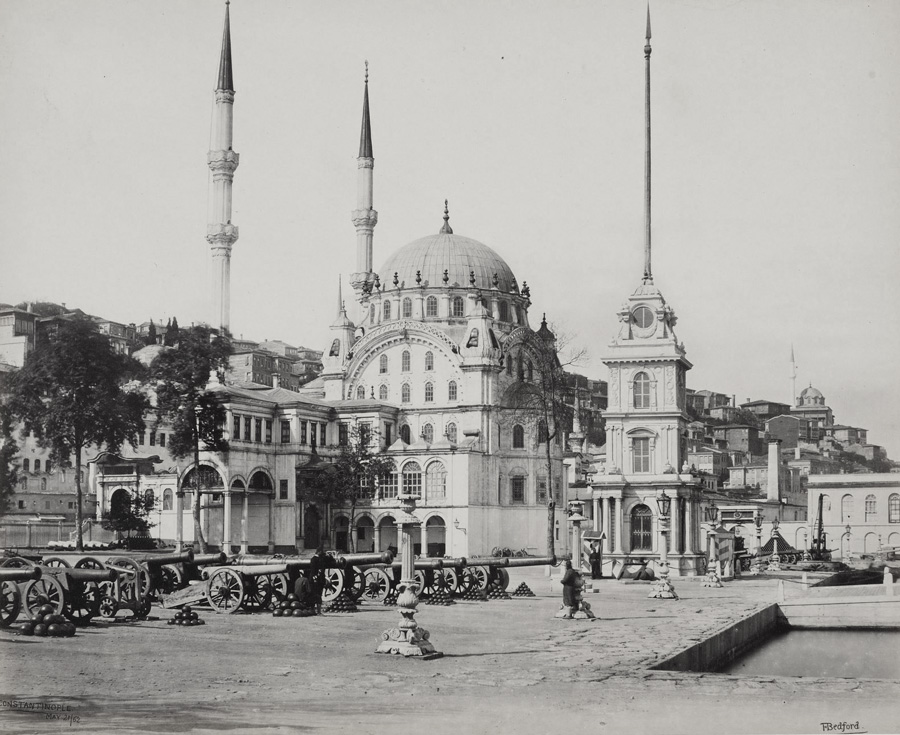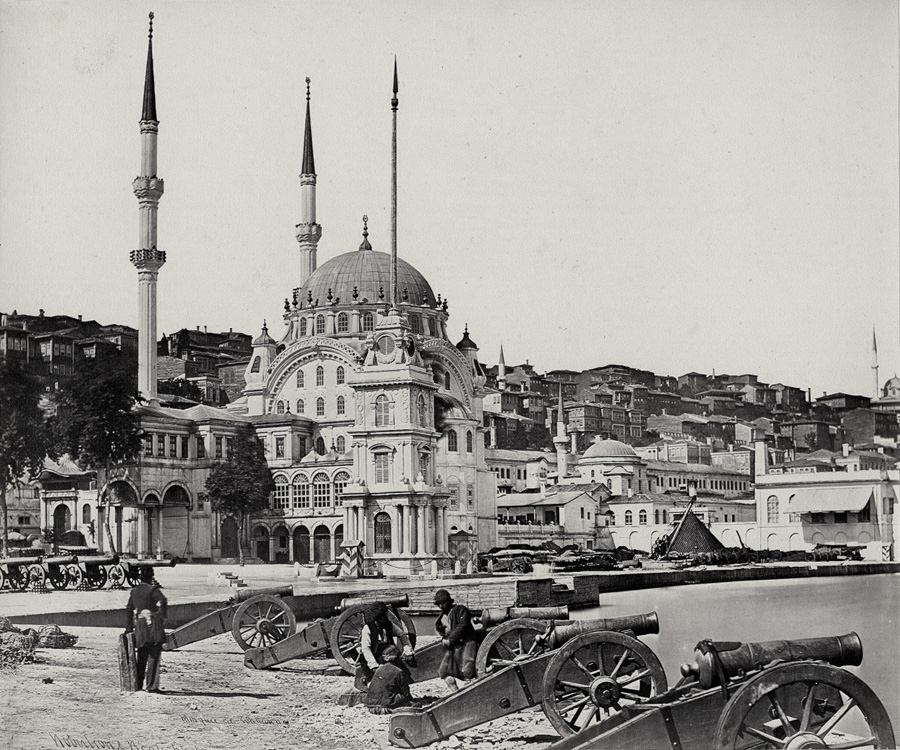
Ephemera
Tophane Ford works
Now crowded with buildings and car parks, the district of Tophane, just downstram from Dolmabahçe Palace was once the location of a Ford Motor Company assembly works.
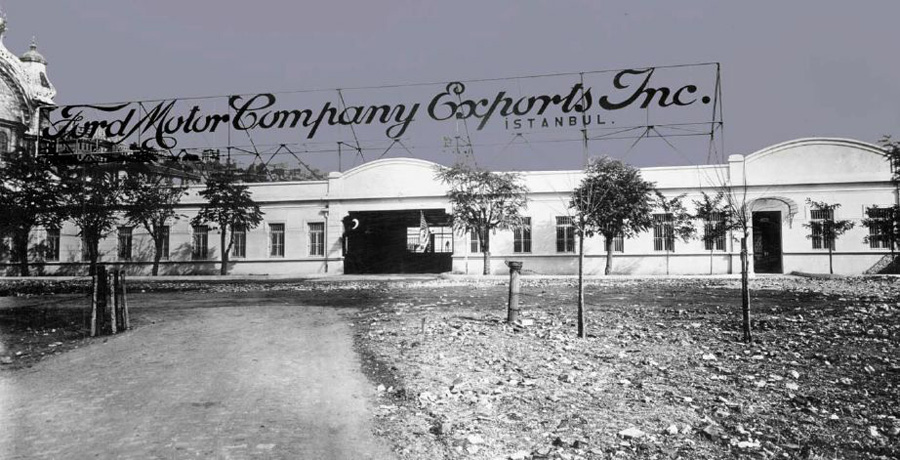
View taken sometime during the operations of these works 1925-1944 with the Turkish and American flags prominently displayed at the entrance. Just to the left of the frame is the nearby Tophane Nusretiye Mosque, and the images below show the mosque area from Ottoman times.
Tophane Nusretiye Mosque was built by (Armenian Architects, Balyan Family) Kirkor Balyan, in Baroque-style for Sultan II. Mahmut, between 1823- 1826, in Istanbul. The photograph is signed, ‘F. Bedford, Constantinople’, 1862, a year before the artillery barracks here were destroyed in a major fire.
Photo by James Robertson & Felice Beato, 1855.
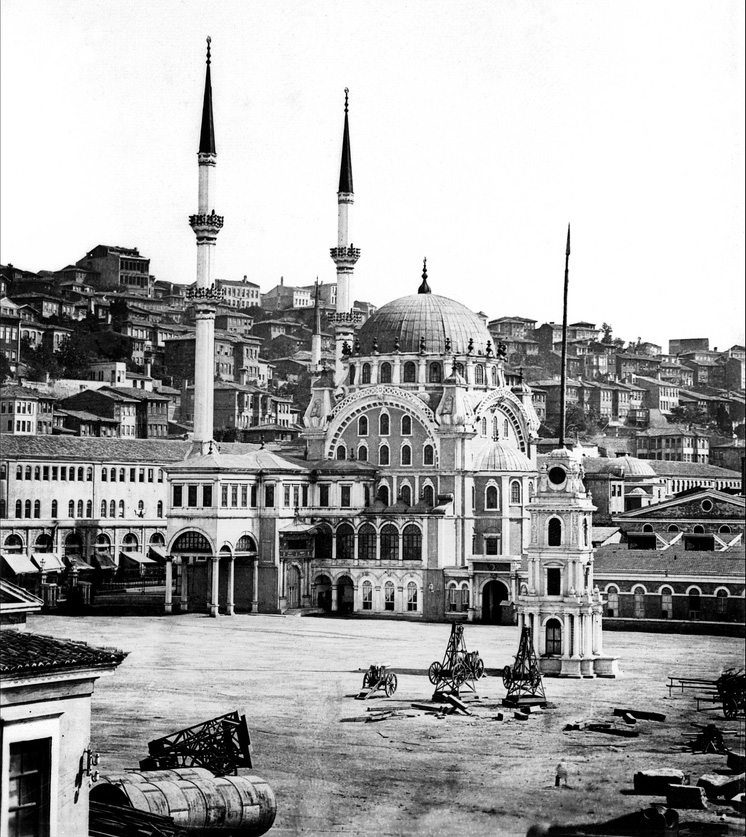
Photo by Basile Kargopoulo.
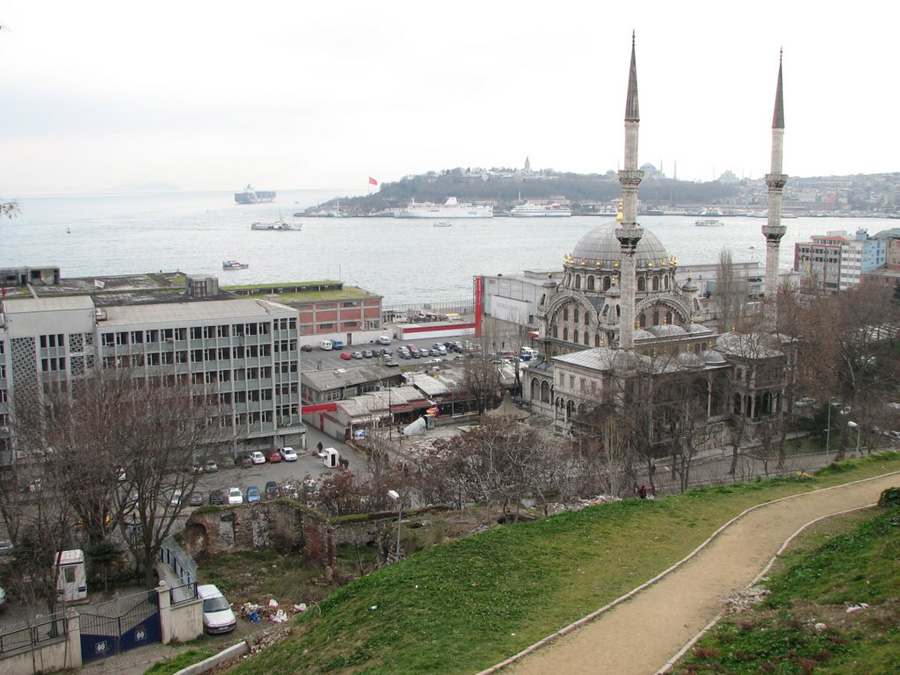
The crowded area today with car parking and the Istanbul Modern Art Gallery.
The Tophane works was the first motor assembly centre in Turkey, on a piece of land designated as ‘extra-territorial’. There was an agreement between the young Republican Turkish Government and United States and it was probably a means of cutting down on red-tape and import taxes, and allowing for the fledging Turkey with virtually no industry a first step towards inward investment. The zone was 25.617 m2, and it was the first ‘Free Trade Zone’ of Turkey.
The law for the extra-territoriality of this land between the Turkish Republican Government and Ford Motor Exports Incorporated Company was signed 2 February 1929. So we can see from this date that the works were operational in a semi-official and possibly limited capacity for around 4 years. The Detroit USA based Ford Motor Company was the first company in the world to bring mass-production techniques to make the motor car available to the masses with the famous Model-T. In addition to production aimed at the American market, the company actively sought to create new markets over-seas in locations accessible to the sea, from whence parts could easily be brought. Earlier president of the company, Henry Ford had personally wrote a letter to the Ministry of Finance with this proposal. Additionally the inspector of overseas Ford Works, J.J. Harrington had visited June / July 1925 Trieste, Piraeus and Istanbul and had reported extensively on the inadequacy of production in Trieste and suggested as soon as the ‘extra-territorial’ concession was obtained in Istanbul the former production could then be focused solely on the region Italy, Yugoslavia, Czechoslovakia, Austria, Hungary, Albania and the Italian Colonies allowing Istanbul production to fill the zone to the East. The official bulletin of the Ford Motor Company of the time, ‘Ford Motor Industries’ Review’ the Trieste works covered the market challenged by border tensions and uncertainties, comprising: ‘Italy, Austria, Czechoslovakia, Hungary, Yugoslavia, Romania, Bulgaria, Albania, Georgia, Greece, European Turkey, Asian Turkey’.
At the time Turkey was recovering from long periods of war at the end of Empire and the internal market for motor cars would have been limited to high-ranking officials and wealthy merchants, most of whom would have been part of the remaining non-Moslem and Levantine elite. The establishment of the works on the shores of the Bosphorus was probably intended as a way to not just tap into the market allowing easy access to the Black Sea region, but also hedging bets as Europe was clearly not free from the ethnic tensions that wracked it a decade before and a decade later again war would engulf the region. The closure of the works in 1944 may have been the Ford Company deciding overseas assembly works were no longer efficient as modern shipping could easily carry whole cars for export, or the Turkish Government not viewing favourably extra-territorial status in an age where it was confident of its own industrial capacity. But the over-riding reason is clearly the long-term effects of the 1929 worldwide stock crash, and the local bureaucratic limitations that prevented this significant investment of close to 1 million dollars to never reaching peak production (150 vehicles per day if operated round the clock, or 80 day-shift), starting at 45 when first set up to 6 when production stopped in 1934. The production machinery was placed on boat to a destination of other later ill-fated factories - Bucharest in Romania or the Ford works in Alexandria in Egypt that had started in 1932. Until 1944 the Tophane location was relegated to spare-parts and service of the existing cars in the city.
The area Salıpazarı Gümrük of which Tophane was the northern end never reached its full port and service potential and in 1986 the area was closed to cargo ships, and when the national maritime agency that owned this strip was privatised in 1995, the 1,500 m seafront was declared a tourism area to restrict development. Ironically since then a massive ‘Galataport’ project has transformed the entire zone to create a rival to other major international ports such as Pireaus and Trieste in an earlier era. This major development has created its own legal challenges, controversies and some historic buildings have been lost, other preserved. The project is currently at a standstill following a successful legal challenge and the massive drop in tourism in recent times has placed a question mark on this huge investment (Doğuş Holding, $702 million) which primarily relied on giant ocean cruises being able to dock here in multiple numbers.
The core of the information on this page comes courtesy of Ms Aslı Odman from the research as part of her phd thesis, who is currently a an instructor / researcher at the Mimar Sinan Fine Arts University, Department of Urban and Regional Planning, and her academia published article is accessible here:
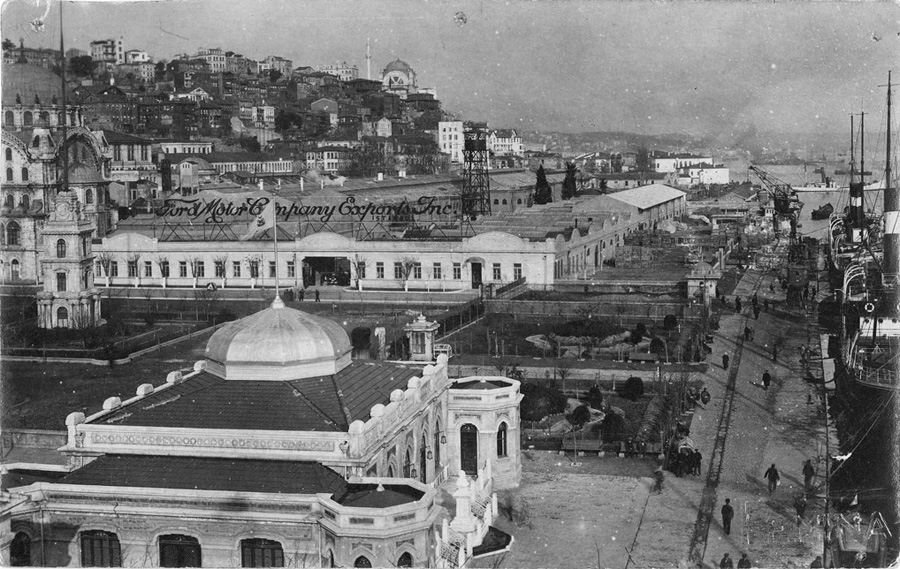
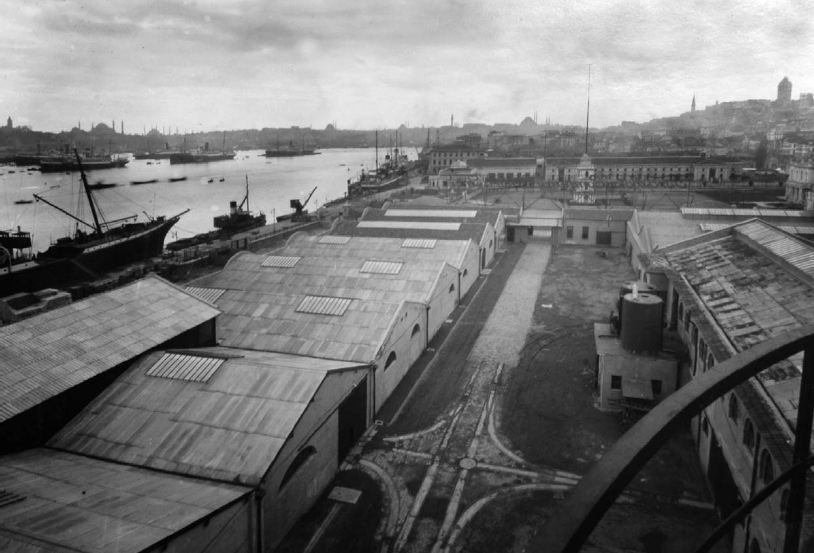
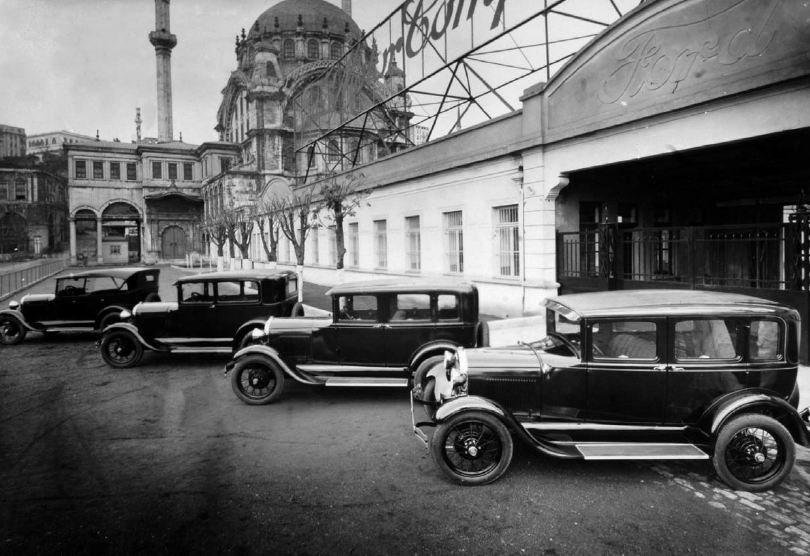
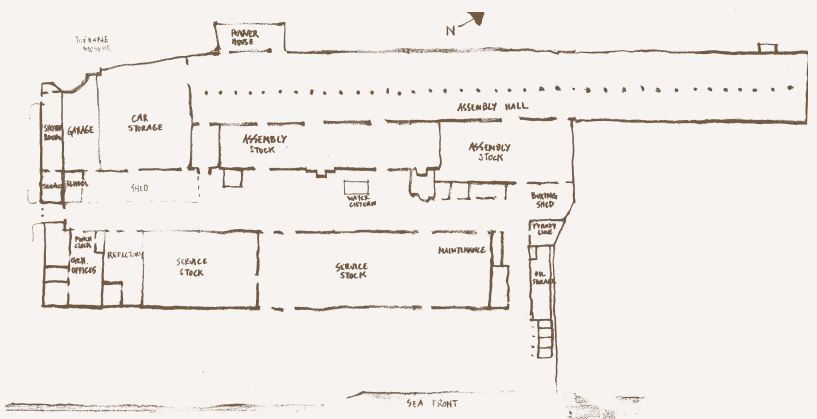
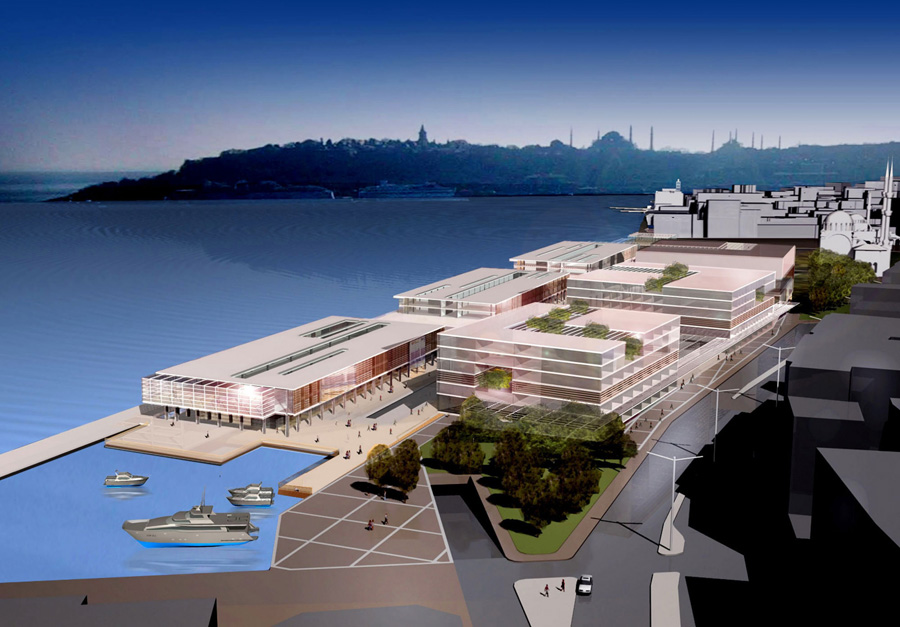
Architectural visualisation of how Galatport might look like if and when the project is completed.
